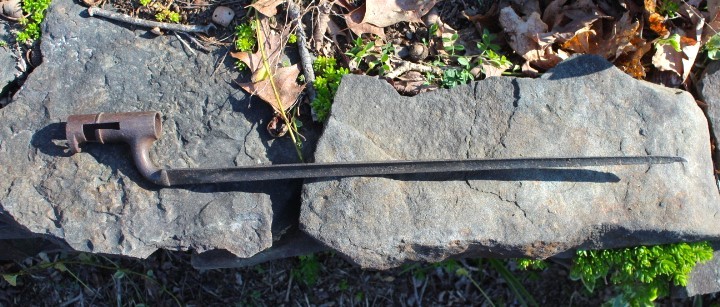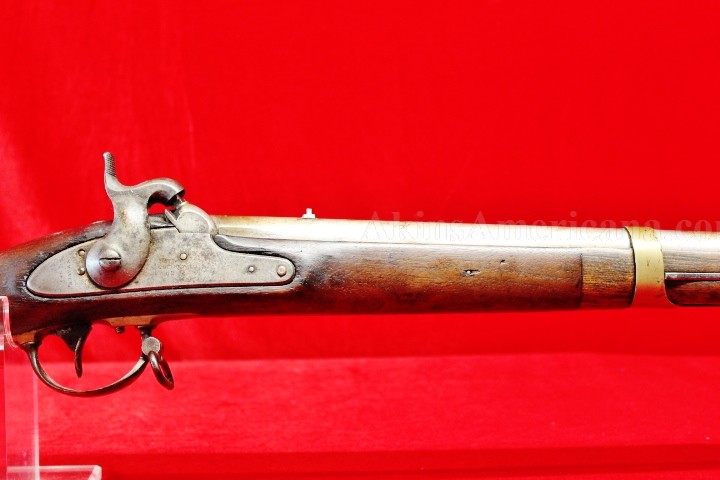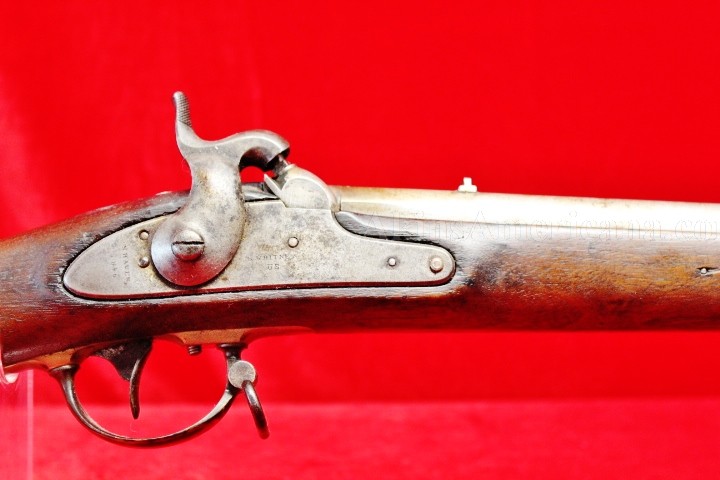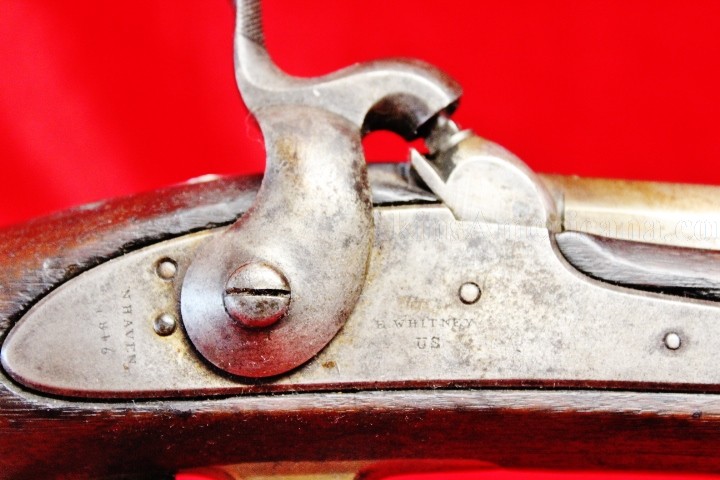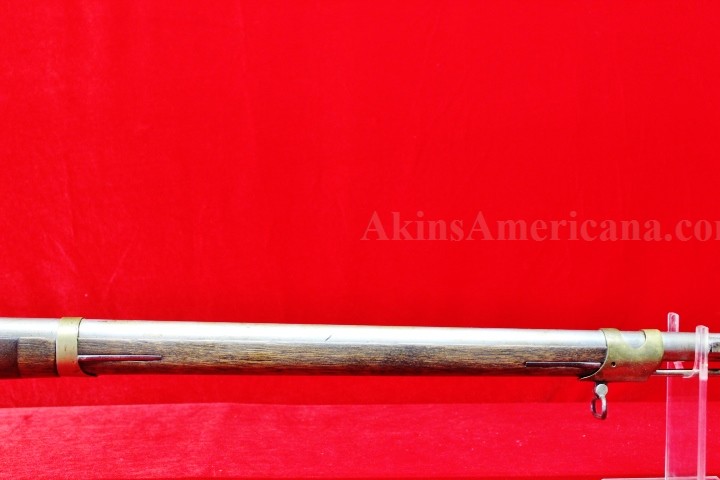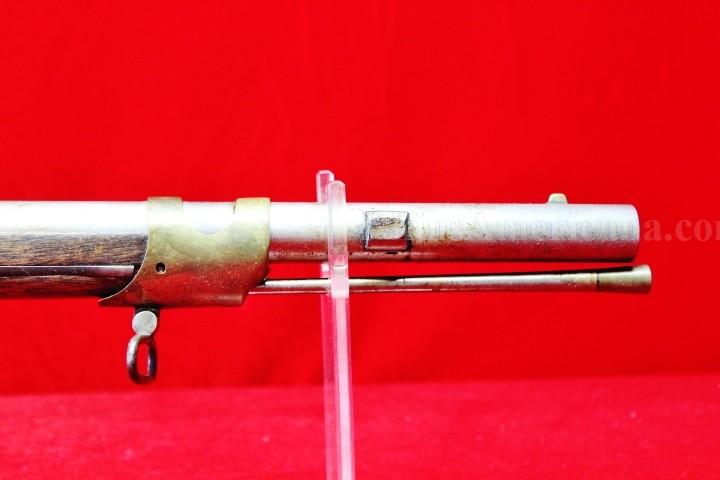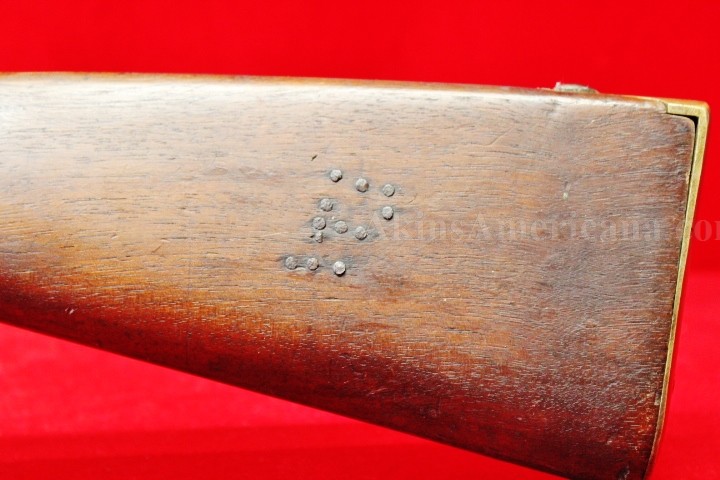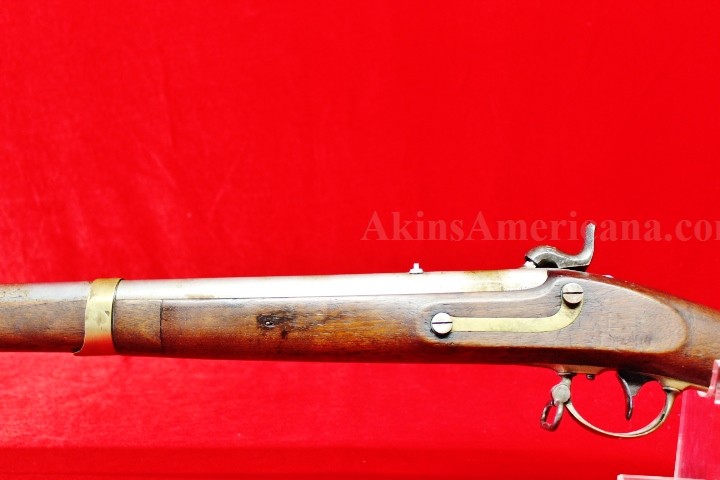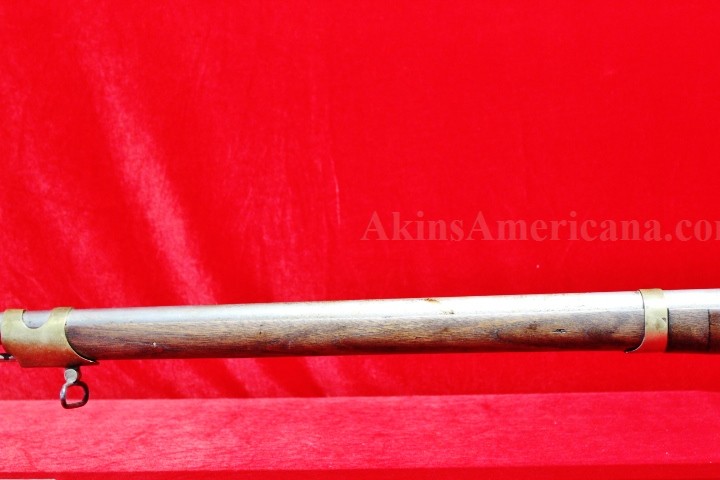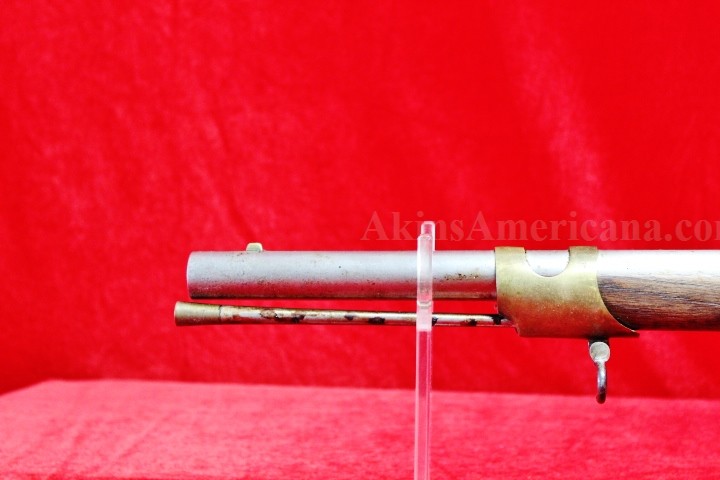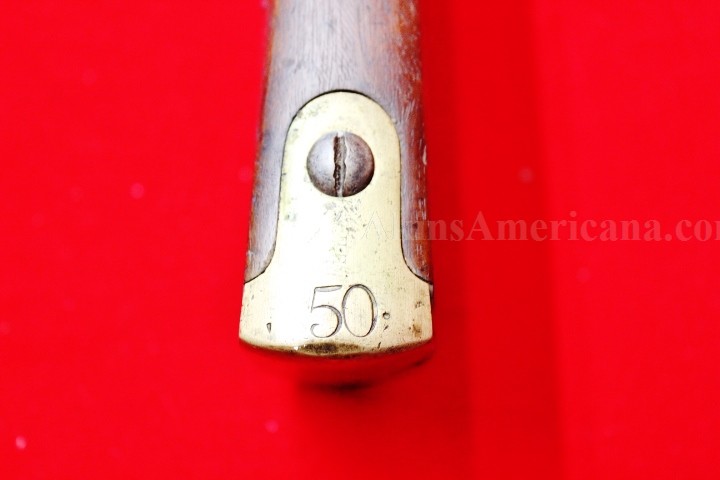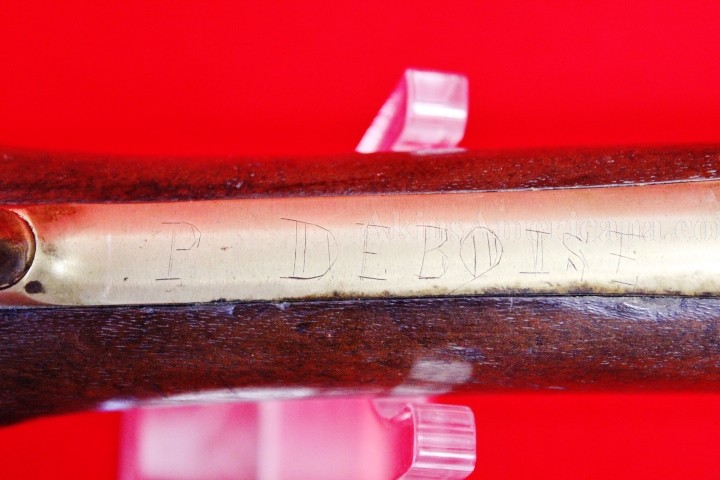Confederate Altered Model 1841 "Mississippi" Rifle
Item #: AA1141
This is a Model 1841 "Mississippi" rifle manufactured by the Eli Whitney firm and altered for Confederate use during the Civil War. At the beginning of the war there were nearly 20,000 Model 1841 rifles in arsenals within the states that seceded to form the Confederate States of America. 9,304 of these rifles had been issued to these southern states under the Militia Act of 1808, the issues occurring between 1845 and 1859. These guns were manufactured by four primary contractors: Tryon, Remington, Robbins & Lawrence and Eli Whitney, the majority of them being Whitney's. The majority of these Model 1841's were in their original .54 caliber, fixed sight configuration with no means to mount a bayonet. When war broke out, many of these rifles were modified in southern arsenals and by gunsmiths to accept bayonets, typically saber bayonets. Some of these alterations have been attributed to specific gunsmiths such as J.H. Happoldt of South Carolina and William & Cyrus Fisher of Virginia. The majority of the gunsmiths are unknown, and the alterations are referred to as "Virginia" alterations because the majority of the weapons were used within the Virginia theater of operations. Of the 19,304 Model 41's in the south at the beginning of the war, 17,893 were .54 caliber with no means of mounting a bayonet. The simplest solution was to braze a saber bayonet lug to the right side of the barrel. The lugs were usually between 3" - 3 3/4' from the muzzle. Most of the lugs were simple pieces about 1/2" long and had no key or guide for the bayonet. These bayonet lug alterations were performed in Virginia, North Carolina, South Carolina and Tennessee. While the "fix" for mounting a bayonet was relatively simple, it created another problem. Once the lug was permanently installed the front barrel band could no longer be removed, which meant the barrel could no longer be removed from the stock. The Harpers Ferry arsenal was modifying some of these "Mississippi" rifles prior to the war and had adapted a new, shorter barrel band that could be removed from the stock and rotated 90 degrees, allowing it to clear the lug. Southern gunsmiths did not have the time, budget or sometimes ability to cast new bands for the rifles they altered. Their solutions required reusing the parts on the gun with little to no fabrication. Happoldt's solution ot the problem was to make a pair offcuts in the bottom lip of the barrel band to remove enough brass to allow the band to be moved forward and rotated 90 degrees and passed over the lug. This required a level of skill that some gunsmiths did not possess. Most of the other unidentified gunsmiths cut away the upper part of the front band which allowed the band to clear the applied lug. Some of the bands were shortened, and these cut away and shortened bands are referred to as "Virginia" alterations. This "Virginia" altered Model 1841 "Mississippi" rifle is in fair condition. The overall length of the rifle is 48 3/4" with a barrel length slightly shortened to 32 7/8". The Murphy & Madaus's book "Confederate Rifles & Muskets" cites this barrel length as being a Harpers Ferry alteration, pages 351 - 352. While the length matches the Harpers Ferry length, the bore retains it's original 7 groove .54 caliber configuration. The front barrel band is also the shortened band, known to be used at Harpers Ferry. The bore still has some shine left to it, and the rifling is strong. The exterior of the barrel is smooth and has a bright finish with some brown showing here and there. The original small brass blade sight and fixed rear sight are still on the barrel. There are no proofs marks anywhere on the barrel. The barrel tang is not dated either. The bayonet lug is 1/2" in length is is brazed to the right side of the barrel 3 7/16" back from the muzzle. The lock is marked E Whitney over US forward of the hammer and N HAVEN over 1846 in vertical lines behind the hammer. The lockplate has a smooth surface with a dull gray patina. The mechanics work good, with the hammer locking in half cock and full cock. The barrel bands, trigger guard, patchbox, side plate and butt plate all have a matching aged golden patina. Scratched into the trigger guard is the name "P DEBOISE", another Confederate trait. The number 50 is stamped on the butt plate tang. These numbered butt plates are also shown in Murphy & Madaus's book in the section covering Mississippi altered guns by the Confederacy. The stock is in fair condition, no cracks, major gauges or dents. However, the stock has been "stretched". The front 18 7/8" of the stock, basically the forehand from just behind the rear barrel band forward has been replaced. I am not sure when this took place, but it was well executed. The edges of the stock are very crisp. On the left stock comb, opposite the patchbox, the letter P is formed by 12 small iron pins. These saber bayonet equipped "Mississippi" rifles saw significant use early in the war. They were known to have been issued to 2nd and 7th Tennessee Infantry regiments, the 3rd and 6th Alabama Infantry regiments and the 21st Mississippi Infantry regiment. This one is a nice example of a Confederate altered Model 1841 rifle. The price reflects the fact that the stock has been altered. That being said, it will still look great in any Confederate collection!
Shipping Weight:
9 lbs
Item # AA1141
(Sold)
We are currently not accepting on-line orders. If you see something you would like give us a call.

